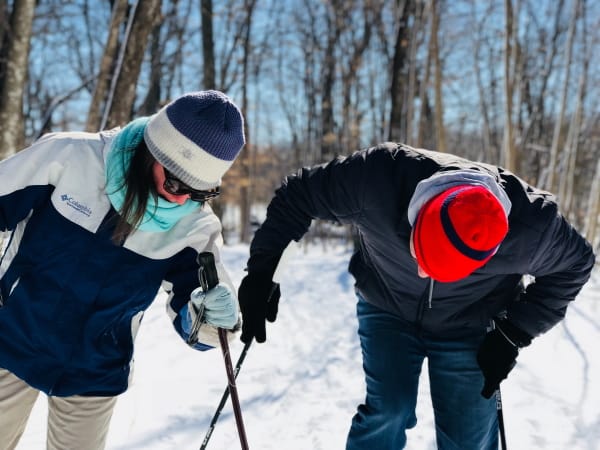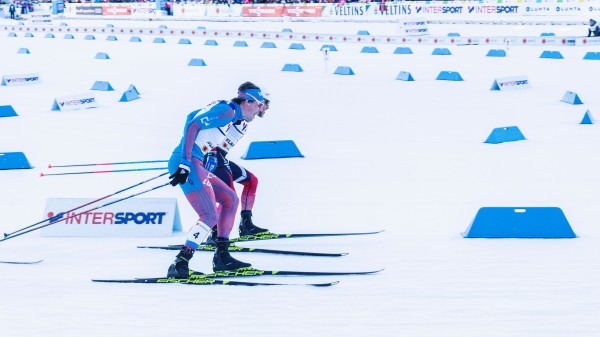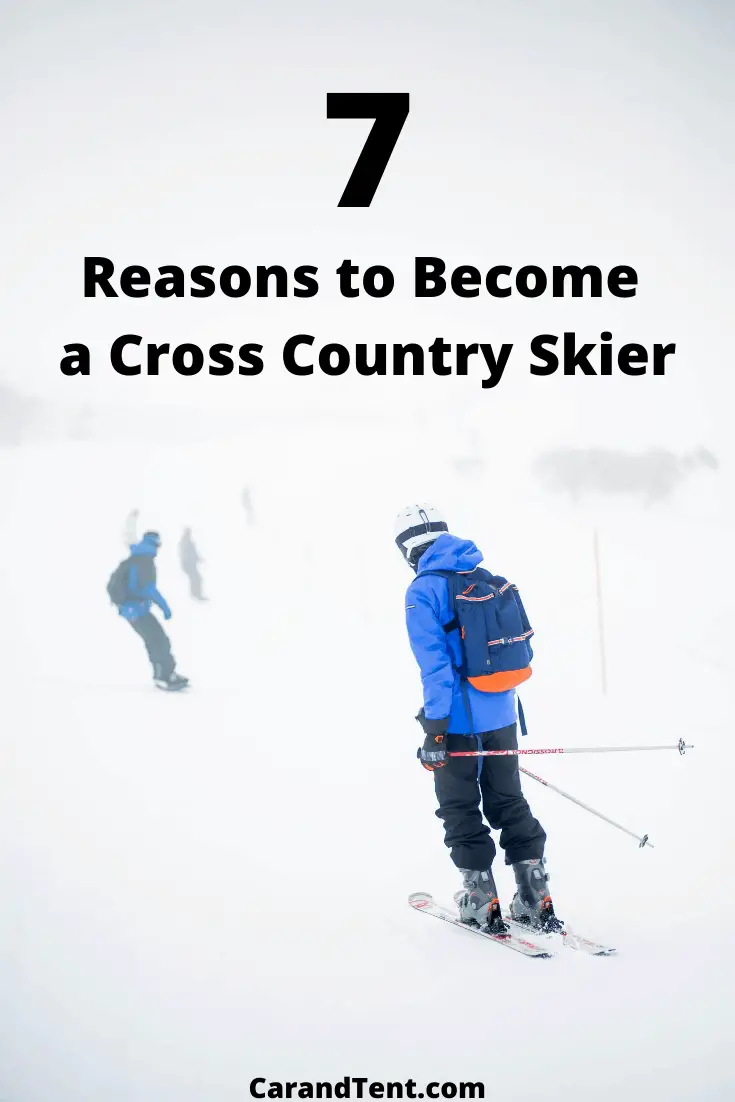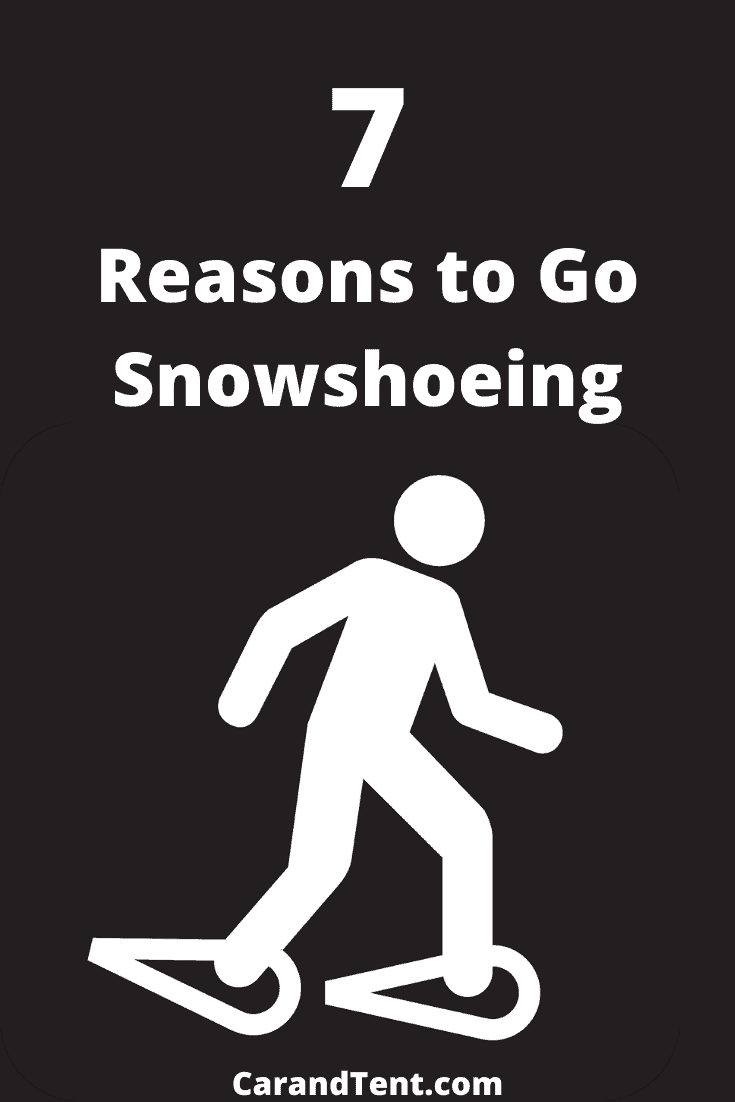
If you’re like me, you don’t have many months of winter weather fun to enjoy. This makes the debate between whether or not to snowshoe or cross country ski an important one.
So, what should you do? Should you go snowshoeing or cross country skiing?
Table of Contents
The Advantages of Snowshoeing vs Cross Country Skiing
Snowshoes have many advantages over cross country skis.
Here are 7 reasons to go snowshoeing instead of cross country skiing.
- Snowshoeing is easier to learn.
- Snowshoes are less expensive.
- Snowshoeing can be done where cross country skiing can’t.
- Snowshoeing burns more calories.
- You’re less likely to suffer severe injuries while snowshoeing.
- You can go deeper into the backcountry on snowshoes.
- Snowshoes are easier to transport and store.
Snowshoeing Is Easier to Learn
When you’re on flat ground, snowshoeing really is just walking. Yes, there are a few tricks you need to learn to make the sport easier but they’re all pretty intuitive.
For example, you may have to pack the snow in while walking uphill or you may have to walk faster while moving downhill through powder. Most people figure this out as they go and simple tricks can easily be picked up online rather than through formal instruction.
Follow the link below and I’ll give you 15 tips you can use when snowshoeing.
Cross country skiing, on the other hand, is a little more complicated. It’s easier to fall on cross country skis than it is on snowshoes and some people might benefit from an instructor their first time out.
Snowshoes Are Less Expensive
You can pick up a pair of cheap snowshoes for less than $100.00. Even expensive snowshoes probably aren’t going to cost you more than $300.00.
By comparison, a basic pair of cross country skis are probably going to cost you around $150.00. An expensive pair of cross country skis can easily cost you over $500.00.
This means you’ll end up paying about 50% more for cross country skis than you would for snowshoes.
Also, snowshoeing doesn’t require as much gear as cross country skiing. This is because you don’t always have to bring poles when snowshoeing but you do when you’re cross country skiing.
Snowshoeing Can Be Done Where Cross Country Skiing Can’t
Snowshoes can be used to scale icy hills, to walk through rough hiking trails, and across wide-open fields. A good pair of snowshoes can go pretty much anywhere, except cross country ski trails.
In fact, they can technically go through cross country ski trails as well but you shouldn’t do it. Snowshoeing on groomed trails ruins them for the cross country skiers and if you use them, you’ll feel bad and people will be mad at you.
Cross country skis often require well-groomed trails or open fields. Some backcountry versions can be used to break trails in but this can be much harder for beginners on cross country skis versus beginners on snowshoes.
Snowshoeing Burns More Calories
Both snowshoeing and cross country skiing burn a lot of calories. This makes them great winter activities for keeping winter weight at bay.
However, snowshoeing tends to burn more calories than cross country skiing. In fact, it burns more calories than almost anything else you could be doing outdoors in the winter.
Check out my post on snowshoeing for exercise for more details on this.
You’re Less Likely to Suffer Severe Injuries While Snowshoeing
Snowshoers are unlikely to fall and they never have to worry about whether they’ll be able to stop or not. Want to stop moving while snowshoeing?
Just stop walking.
With cross country skis, you often pick up momentum. This is true when moving on flat ground and it’s especially true when moving downhill.
As a result, a beginner cross country skier is much more likely to accidentally run into something than a snowshoer would be.
You Can Go Deeper Into the Backcountry on Snowshoes
When you’re on snowshoes, you still have the ability to hop over trees, to walk through tightly grouped rocks and bushes and to hike off the beaten path. You can even buy backcountry snowshoes and push through the backcountry into areas that you’d never be able to visit otherwise.
Backcountry cross country skis don’t give you this kind of versatility. You aren’t going to be able to climb up rocks or hop over trees in a pair of skis.
Snowshoes Are Easier to Transport and Store
Snowshoes aren’t very big. Even my Atlas Trail Shoes are only about 30 inches long.
This makes them easy to store and easy to transport. Even a smaller pair of cross country skis are going to be over five feet long.
A longer pair of cross country skis might be over six and a half feet long. This makes them more difficult to store and harder to fit inside of a vehicle.
It also means that you aren’t going to be able to strap them across your backpack just in case you need them. A small pair of snowshoes, on the other hand, can be strapped to your backpack and you can use them or not use them depending on your needs.
The Advantages of Cross Country Skiing vs Snowshoeing
Now that I’ve hopefully sold you on snowshoeing, let’s talk about the benefits that cross country skiing has over snowshoeing.
Here are 7 reasons to go cross country skiing instead of snowshoeing.
- You don’t need as much snow.
- Cross country skiing is more popular.
- Cross country skiing is easier on your joints.
- Cross country skiing is less demanding on your muscles.
- Cross country skiing is faster than snowshoeing.
- Cross country skiing can help improve your balance.
- You get to enjoy more scenery.
You Don’t Need As Much Snow
To really snowshoe, you need at least 6 inches of snow. If it’s powdery snow, you may even want much more snow than this.
After all, why go snowshoeing in conditions that can just as easily be hiked through?
Cross country skis only require half as much snow as snowshoes. A minimum of three inches of snow can be just enough to get you out on your cross country skis.
This means that people living in areas that don’t receive a lot of snowfall might still get to enjoy their cross country skis several times a year.
Cross Country Skiing Is More Popular
According to Google Trends, cross country skiing is about ten times more popular than snowshoeing. This means there are more people for you to go cross country skiing with than there are to go snowshoeing with.
It also means that there are more cross country ski events than there are snowshoeing events. If you’re into competitive sports, you’ll have many opportunities to compete in cross country ski competitions compared to if you just stick to snowshoeing.
Cross Country Skiing Is Easier on Your Joints
Snowshoeing can be hard on your knees, ankles, and feet. This is because the added weight of the snowshoes and the snow that often accumulate on them adds several pounds directly onto your feet.
On top of this, cross country skiers aren’t lifting their legs very high off the ground. The movement is more of a gentle shuffle than it is a step.
This drastically reduces the amount of downward force that is applied to your joints and reduces strain.
Want to reduce the pressure on your legs even further?
Try the double push method of cross country skiing. This type of cross country skiing technique keeps your legs from having to be raised at all.
Instead, you’ll take both ski poles and use them to propel you forward. Just note that this works only on downhill or flat areas as you’ll be hard-pressed to pull yourself up any steep inclines with just your ski poles.
Cross Country Skiing Is Less Demanding on Your Muscles
While cross country skiing is a great workout that works your entire body, it isn’t quite as difficult as snowshoeing. This is because you get to take advantage of fluid movement and momentum so every step isn’t a struggle like it is when you’re on snowshoes.
Also, it’s a little easier to redistribute muscle activity when cross country skiing versus when snowshoeing. What I mean by this is that you can almost completely take the strain off of your legs by using your poles more and you can take most of the strain off of your upper body by using your legs more.
With snowshoeing, you can lessen the load on your legs by using poles but you’ll still have to use your legs a lot regardless of whether or not you use your poles to help you move.
Cross Country Skiing Is Faster Than Snowshoeing
The Olympic cross country ski sprint event covers a distance of 1.4km. This is about 9 tenths of a mile.
Top competitors will do this in less than 4 minutes.
This puts them at about 20 to 25 miles per hour on flat ground and 35 to 45 miles per hour on the downhill areas. On longer marathons, average speeds are about 15 miles per hour.

You don’t have to be an Olympian to enjoy the increased speeds that cross country skiing has to offer either.
Even a beginner can travel at leisurely speeds of around 4 to 5 miles per hour. This is almost twice the speed of what a beginner snowshoer might expect to travel at when snowshoeing.
Cross Country Skiing Can Help Improve Your Balance
One of the reasons cross country skiing is a little harder to learn than snowshoeing is that it requires a certain level of balance to do without falling. This is because cross country skiers have to constantly shift their balance from one leg to the other.
Every time you step into a glide, you’ll be balancing your body weight on one leg and you’ll be alternating this balance each time you push off. At the end of the season, you’ll notice a marked improvement in your balance. As you age, this could translate into a lower risk of falling and injuring yourself.
In fact, balance is so important in cross country skiing that you’ll find that there are many balance exercises you can do in the summer to help prepare you for the season. If your balance isn’t the greatest, I’d highly recommend you look into these exercises before you hit the cross country ski trails this year.
You Get to Enjoy More Scenery
Olympic cross country skiers complete in 50-kilometer marathon races. This is about 31 miles of cross country skiing.
The top athletes will do this in less than 2 hours.
While you might never reach Olympic speeds or distances, you can still travel great distances during just one cross country ski outing. This means you’ll get to see a lot more scenery in a day than you would if you were plodding along at just 2 to 3 miles per hour on your snowshoes.
Final Thoughts
Both cross country skiing and snowshoeing are great activities that make me look forward to each winter. They’re also both very different from each other and while they often offer similar benefits, they do have advantages and disadvantages over each other.
My advice to anyone considering both of them is to go someplace for a weekend where you can rent both snowshoes and cross country skis. Spend a day snowshoeing and then spend a day cross country skiing or vice versa.
This will give you a better idea of what to buy first and if you can’t decide between the two, just buy both! Do this and you’ll have twice as many reasons to look forward to winter each year.



